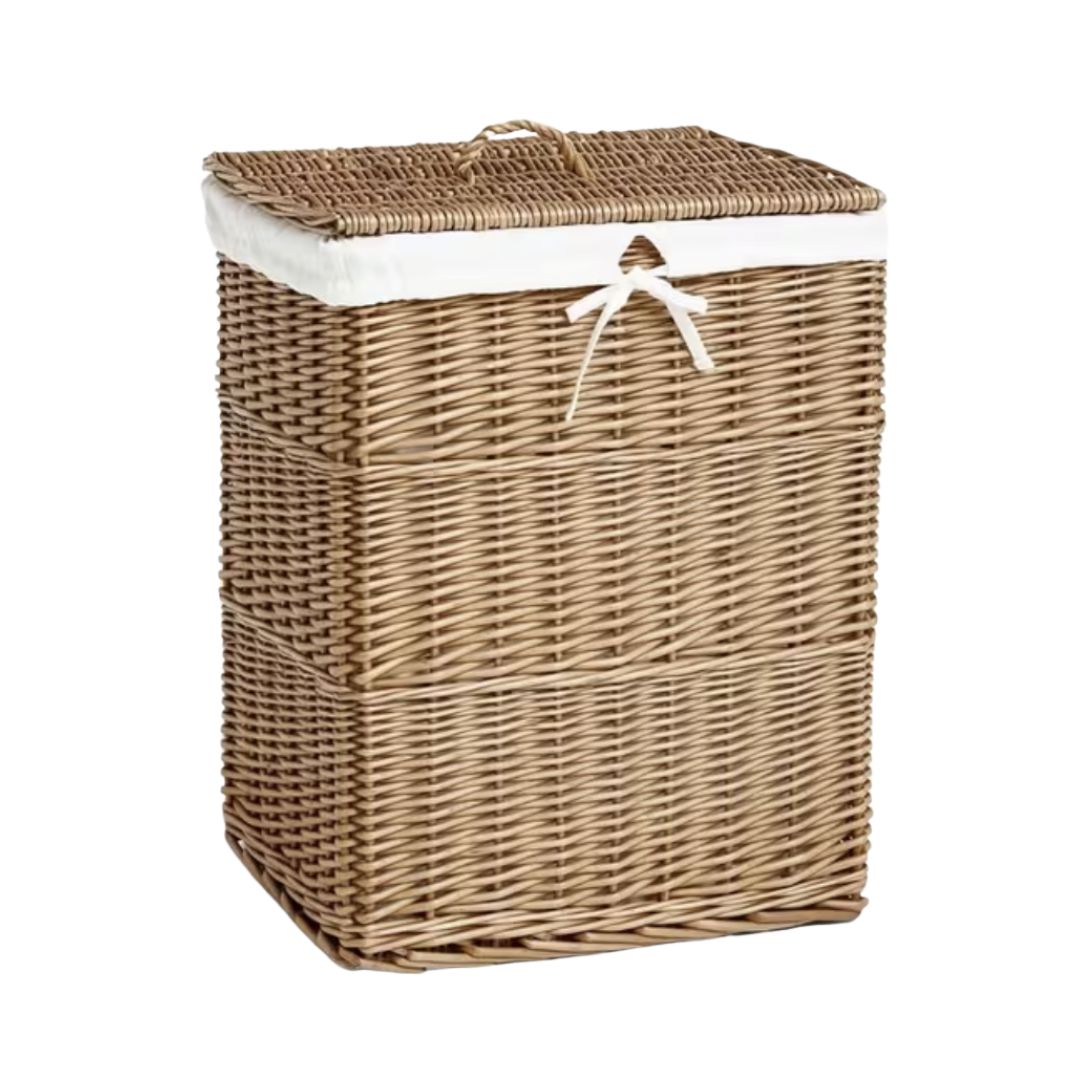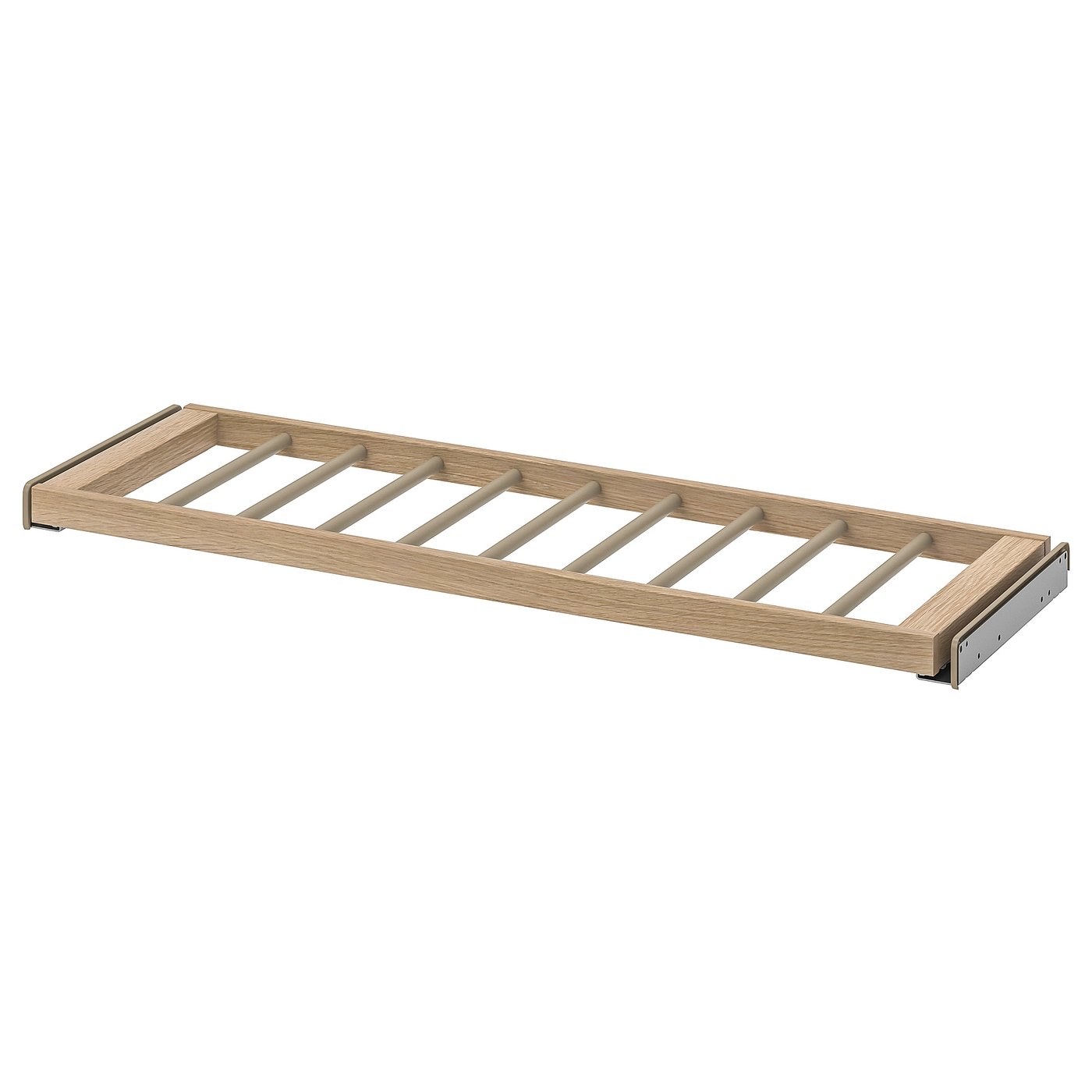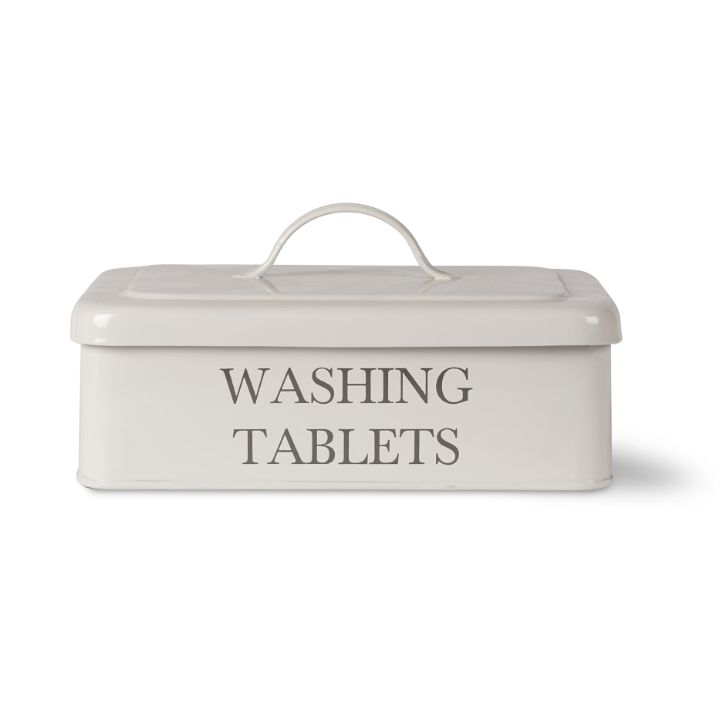Can You Put a Washer and Dryer in a Kitchen? 'Yes', Say Designers, and Here Are 5 Ways to Make It Work
If a designated utility room remains a pipe dream, here are all the nifty, space-saving solutions to make your laundry appliances work in your kitchen

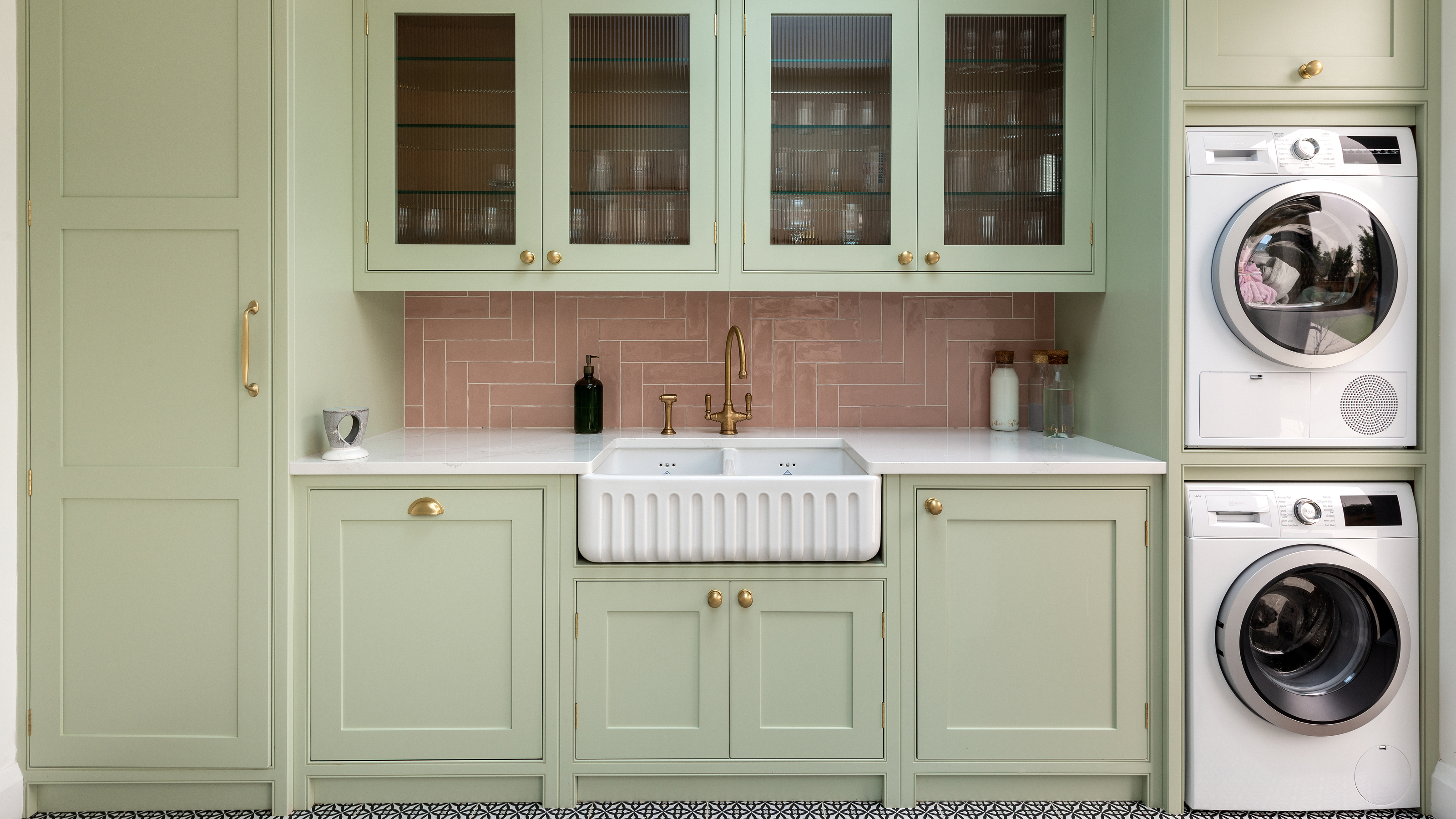
Where in the home should a washer and dryer go? It's a question that Europeans and North Americans will give you two different answers to. For most of us, the dream scenario would be a dedicated utility room suitable for both washing and drying your laundry. For those of us in smaller homes, however, that dream will never be a reality. Instead, the kitchen becomes their home.
It might seem unnatural to some, but the kitchen is actually a very suitable place for your washer and dryer; after all, our kitchens are home to almost every other bulky appliance we own. There's also the fact that you can utilize the existing plumbing to hook up both machines, meaning there's no need for costly remodelling just to install your inlet and outlet hose.
Although there's nothing stopping you from putting a washer and dryer in your kitchen, there are a few things you'll need to consider. First, you'll need to find a way to make them work in your layout, and when space is at a premium, that's not always easy. Secondly, you'll probably want to disguise your washer and dryer, because while kitchen appliance trends have given birth to some aesthetic ovens and fridges over the years, washing machines and tumble dryers are yet to catch up.
Fortunately for you, we've consulted some design experts for their advice on how to stylishly integrate a washer and dryer into your kitchen (and before you ask, yes, it is possible). Here are five ideas to make it work, no matter how limited your blueprint might be.
1. Stack Your Appliances to Capitalize On Vertical Space
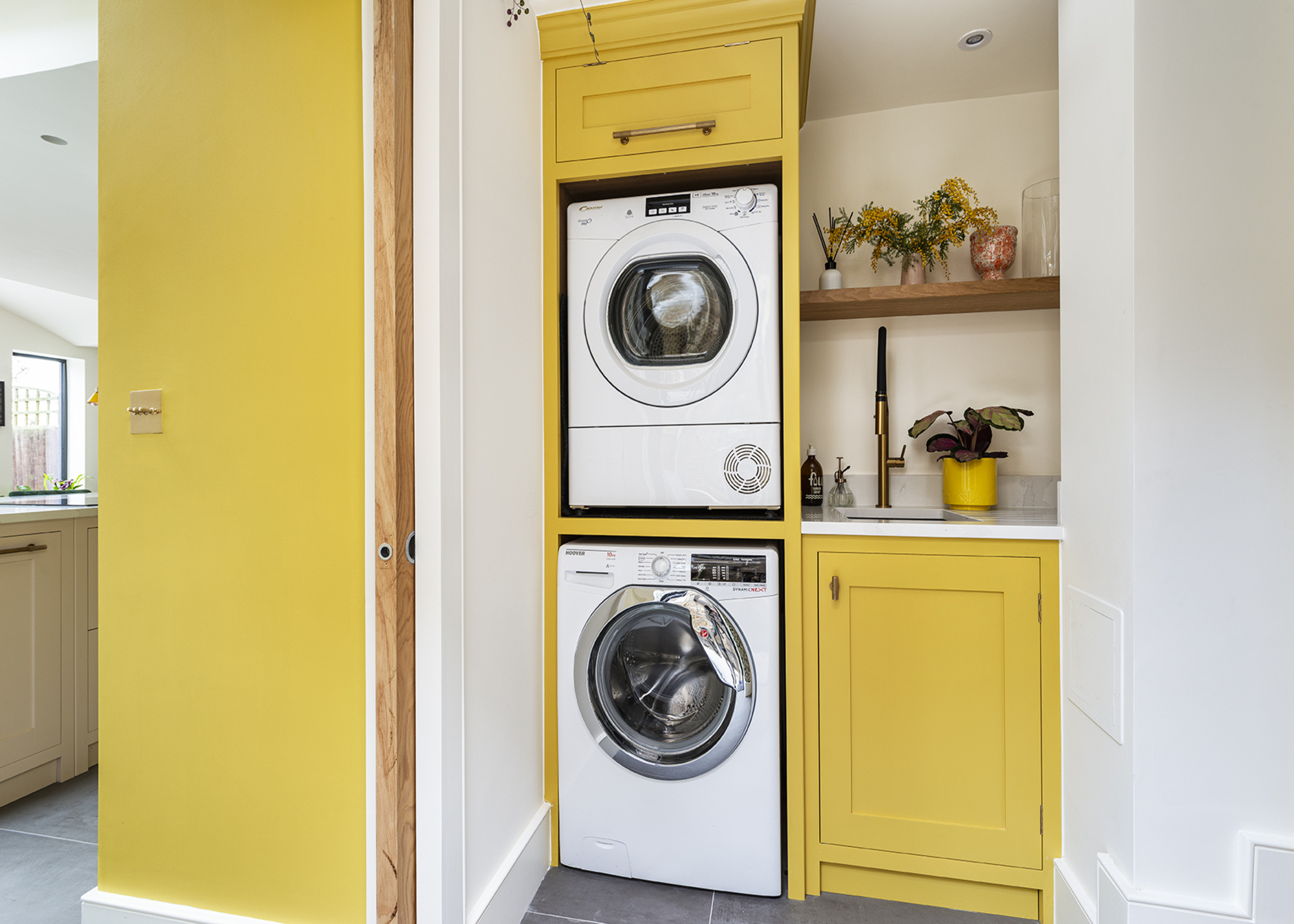
The biggest obstacle you'll likely face when designing a washer and dryer in a modern kitchen is finding room in your layout in the first place. When available floor space is already at a premium, the last thing you want to do is take up valuable square footage that could be used for storage or more essential appliances. In such cases, stacking your washer and dryer could be the best solution.
"Stacking your washer and dryer within built-in cabinetry is a smart and stylish way to save space while keeping your utility area sleek and clutter-free," says Rhiannon Phenis, head of design at Sola Kitchens. "This hidden laundry solution blends seamlessly with the rest of the interiors — perfect for modern, minimalist homes."
Some kitchen makers have cottoned on to this idea, offering specially designed cabinets that allow homeowners to discreetly hide away their washer and dryer while capitalizing on vertical space. "Whether right in the kitchen itself or in an adjoining laundry room, using a stacking unit is a great way to get the most out of every inch of your kitchen’s footprint," says Sinead Trainor, kitchen category manager at LochAnna Kitchens. "You can even add an integrated pull-out shelf, which locks securely into place, to hold laundry baskets securely whilst you load and unload."
The Livingetc newsletters are your inside source for what’s shaping interiors now - and what’s next. Discover trend forecasts, smart style ideas, and curated shopping inspiration that brings design to life. Subscribe today and stay ahead of the curve.
2. Build Your Washer and Dryer Into a Utility Cupboard
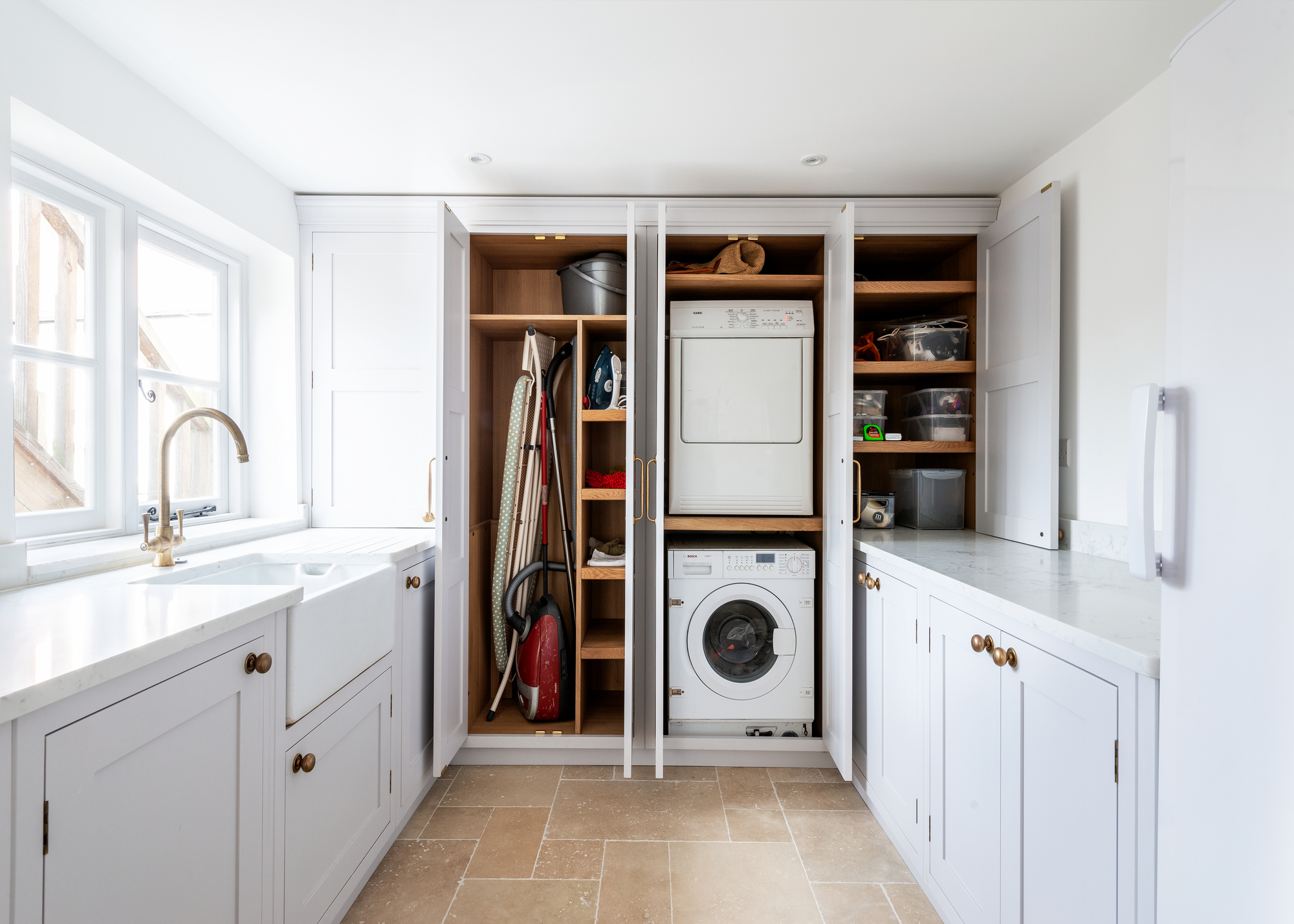
If you don't have a utility room, consider dedicating a wall of your kitchen to a utility cupboard instead. Consider it the next best thing — a space that allows you to combine your all-important laundry supplies into one area to ease the washing, drying, ironing, and general organization of your clothes.
The beauty of this idea? It hides both your appliances (and other more unsightly supplies) behind built-in cabinetry, blending in with your surrounding kitchen cabinets for a streamlined look.
If you want to take things a step further, you could even consider a hidden utility cupboard. Stretch your joinery to the ceiling and choose slab fronts that blend seamlessly together. "While the concept of secret doors may seem extravagant, they can be adapted to suit a wide range of kitchen layouts and styles," says Sinead. "With careful planning and consideration of space constraints, these doors can be incorporated into both large and small kitchens alike."

Rhiannon Phenis is Head of Design at Sola Kitchens, where she has been shaping homes with Scandinavian elegance for over 12 years. Sola Kitchens is the UK’s leading specialist in Scandinavian luxury bespoke kitchens. Known for their clean, contemporary style and exceptional craftsmanship, Sola Kitchens is the only company in the UK offering truly bespoke Scandinavian-style kitchens and home storage solutions—each one handcrafted by skilled artisans in dedicated workshops
3. Disguise Your Machines Behind a Curtain
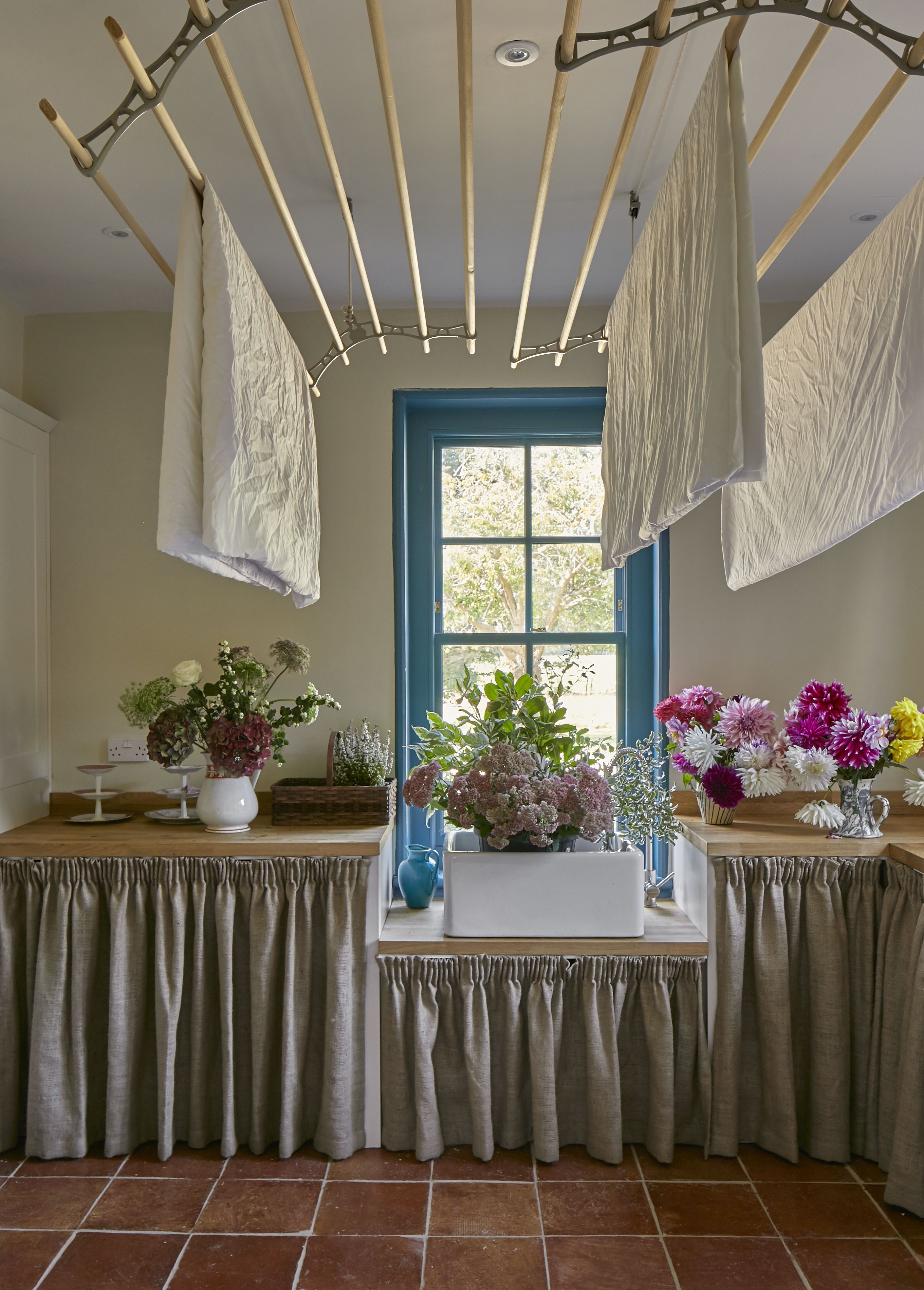
Even if you've invested in the best kitchen appliance brands for your washer and dryer, you probably don't want them on show. These bulky machines don't contribute anything to a kitchen design, and they're not the sort of thing you want interrupting a line of beautiful cabinetry.
If you don't want your washer and dryer on show but you also want to avoid going too heavy on the joinery by integrating your appliances, consider a simple curtain instead. Inspired by the sink skirt trend, this design idea adds rustic charm to a kitchen for a warmer, softer feel. Both your washer and dryer will remain easily accessible; they'll just be hidden behind a more attractive veil. It's an easy, budget-friendly DIY that offers up the opportunity to bring pattern and texture into a stark kitchen that's otherwise dominated by cabinetry.
4. Or Hide Them Behind Closed Doors
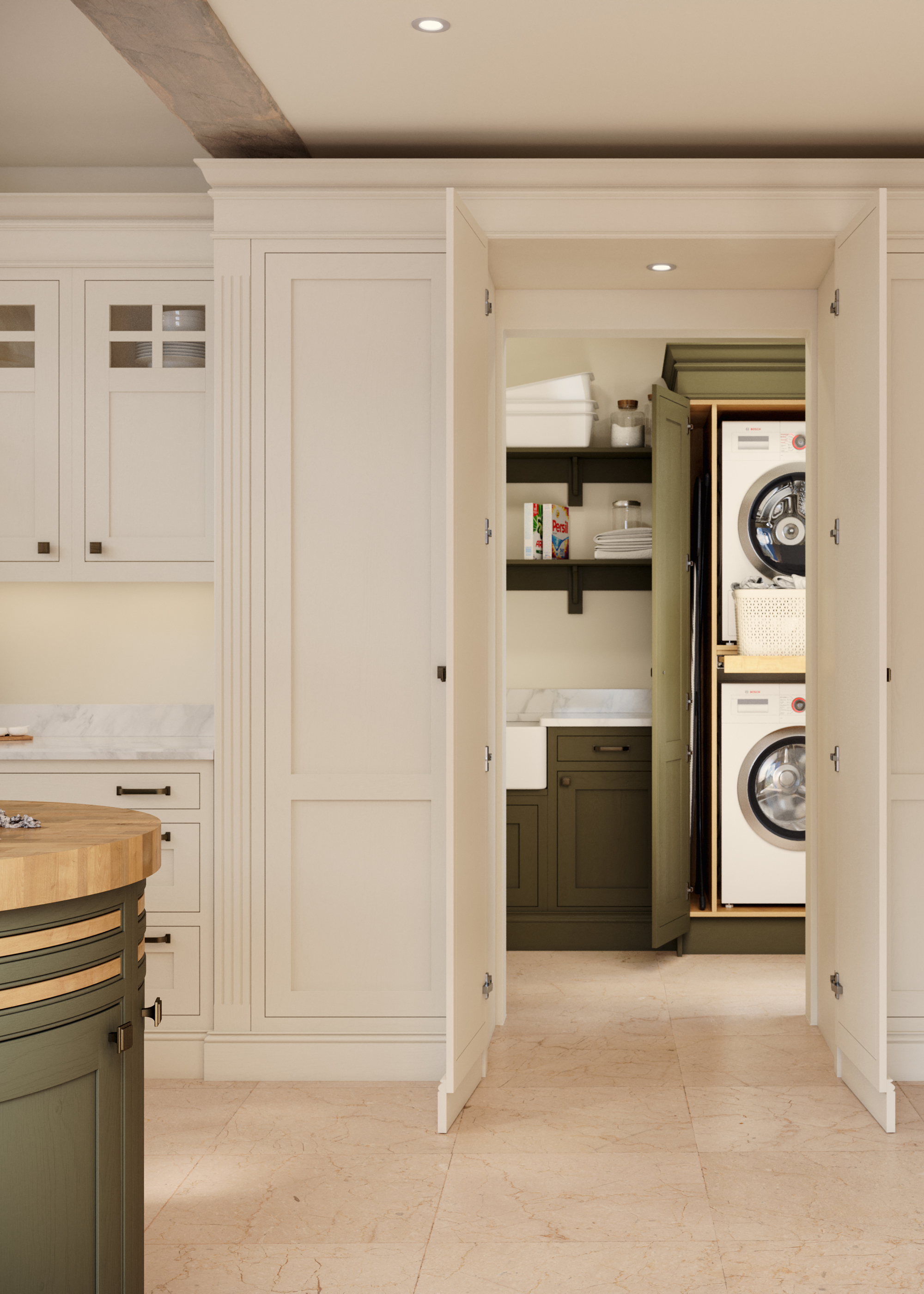
Blessed with a large kitchen? Why not partition part of it off for a dedicated laundry space? In smaller homes, embracing multifunctionality in this way is key. You can make your own miniature utility room by simply hiding your washer and dryer behind closed doors.
This idea works well if you have a generously sized walk-in pantry, or in the liminal space between a kitchen and the back door, a space William Durrant, owner of kitchen makers Herringbone House, likes to refer to as a "bootility". "It's a space where you can combine washing, drying, and seating," he says, "and it's a system that works well in London townhouses, for example."
If you're building a partition, Sinead recommends including a hidden door within floor-to-ceiling cabinetry. "Beyond the element of surprise and whimsy they add to the space, integrating secret doors disguised as cabinets into kitchen designs offers a multitude of benefits," she says. "They serve both an aesthetic and practical purpose by seamlessly blending functional areas such as pantry storage, utility rooms, or even hidden bars into the wider kitchen layout."

William Durrant has worked in the cabinet and furniture manufacturing industry for over a decade. After learning from powerful kitchen brands, he had a desire to manage all aspects of home design projects, so he founded Herringbone Kitchens, now known as Herringbone House 10 years ago. He owns the family run cabinet and furniture design and joinery company, where he manages a talented creative team of designers and skilled craftsmen from their studio in the heart of Canterbury, Kent and the workshop just outside the city walls.
5. Flank a Sink for Plumbing Efficiency
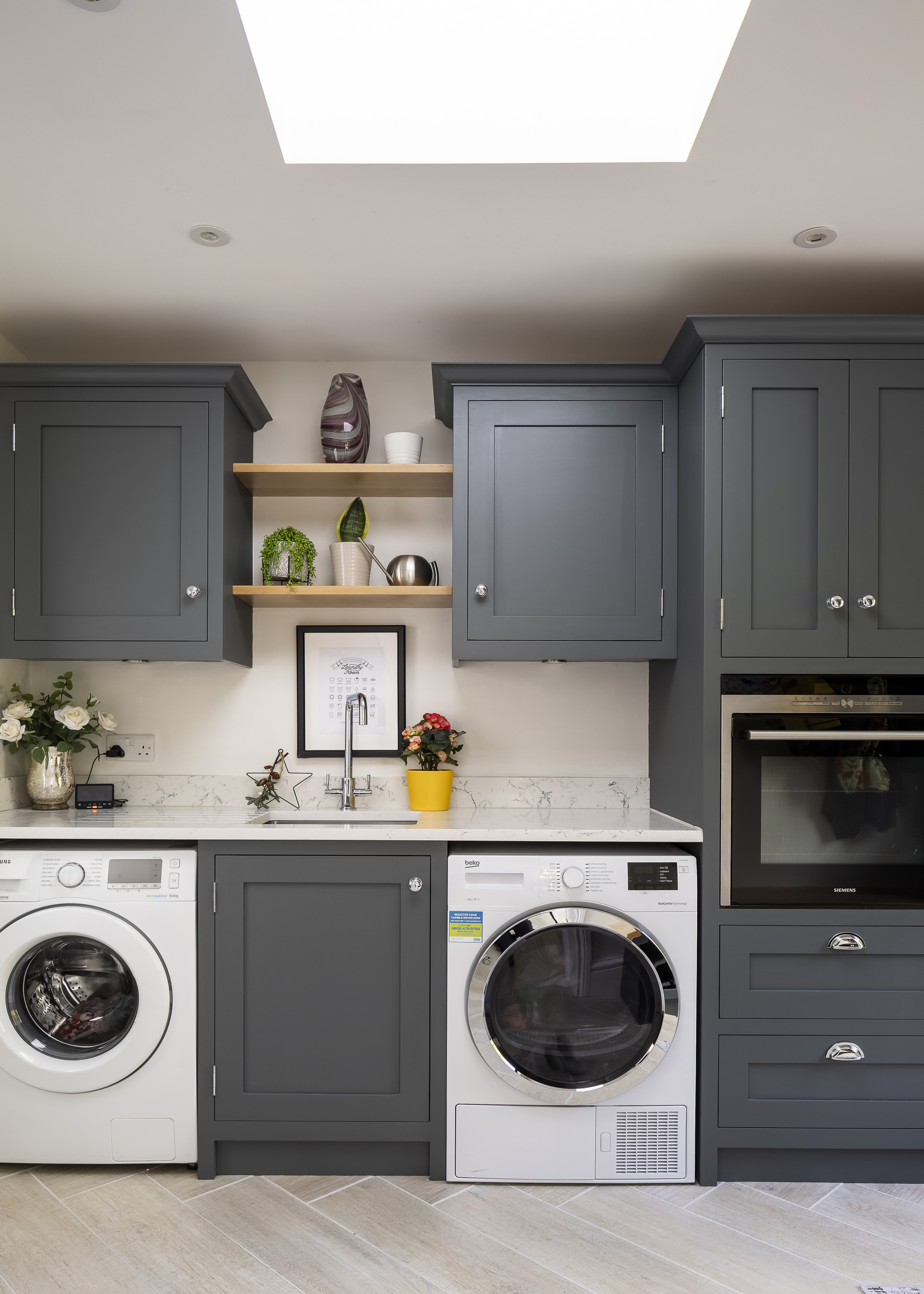
For a convenient kitchen blueprint, it's a good idea to position your washer and dryer so they flank your kitchen sink. This practical set-up will simplify your plumbing, making it easier to install and maintain the pipework needed for both appliances. There's also the added practical advantage that you can easily pre-treat stains or handwash delicates right next door.
"A sink and a worktop space are always a priority within a laundry room, and this is the most efficient way to get both in a kitchen," says William. With this layout, it might be necessary to dedicate your wall cabinets as primary kitchen storage instead of relying on lower cabinets, but it'll force you to think about how to use your kitchen more efficiently.
Your Kitchen Essentials
FAQs
Is a Washing Machine in a Kitchen a Good Idea?
Whether or not it's a good idea to include your washer and dryer in your kitchen really depends on the space you have available. If you don't have a utility room, it may be unavoidable.
In smaller kitchens, deciding on where to place your appliances will become more of a challenge. Without thoughtful design decisions, they can impact the visual harmony of your space and limit your kitchen's capacity, leading to a cluttered look. However, with some space-saving solutions and some clever styling, you can minimize their impact, successfully integrating both the washer and dryer. And if you're really short for space, you can always opt for a washer-dryer-combi that offers both settings from the same machine.
With these designer-approved ideas you can include a washer and dryer within your kitchen with confidence. The biggest challenge is finding a layout that works for you, so think carefully about your configuration first. Once that's out of the way, opt for beautiful joinery or a simple curtain and you'll have stylishly integrated appliances that fit seamlessly into your space.

Lilith Hudson is a freelance writer and regular contributor to Livingetc. She holds an MA in Magazine Journalism from City, University of London, and has written for various titles including Homes & Gardens, House Beautiful, Advnture, the Saturday Times Magazine, Evening Standard, DJ Mag, Metro, and The Simple Things Magazine.
Prior to going freelance, Lilith was the News and Trends Editor at Livingetc. It was a role that helped her develop a keen eye for spotting all the latest micro-trends, interior hacks, and viral decor must-haves you need in your home. With a constant ear to the ground on the design scene, she's ahead of the curve when it comes to the latest color that's sweeping interiors or the hot new style to decorate our homes.
